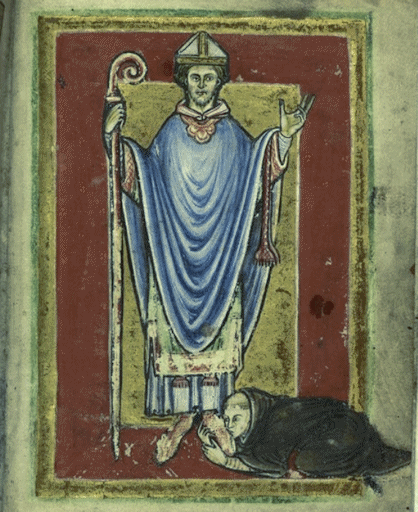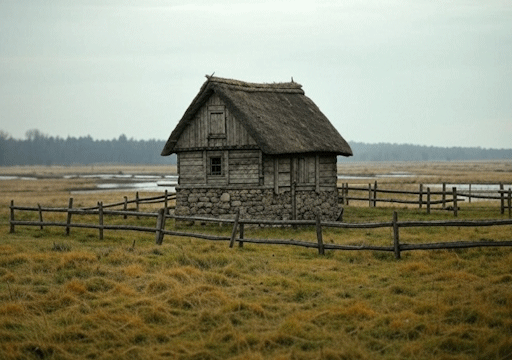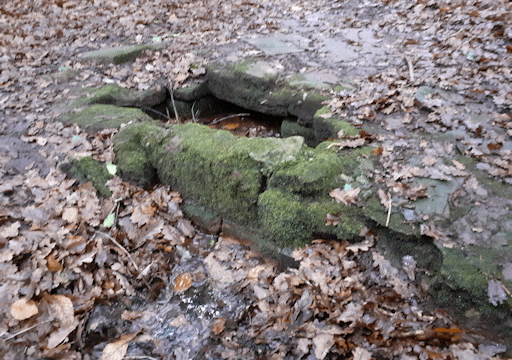|
Gilbert Murray MP's Westminster Blog Gypping in the Marsh in Times Past A Brief History of Gypping in the Marsh Gypping in the Marsh - the Murray Connection Dates in the Gypping in the Marsh Village Calendar Saint Bodkin and his Holy Well Abigail Morris: Britain's Last Anchoress Famous Gypping in the Marsh Artists Gypping in the Marsh Local Businesses |
Saint Bodkin and his Holy WellGypping in the Marsh's parish church is dedicated to Saint Bodkin, a somewhat shadowy figure from the early medieval period. What little we know about him comes to us mainly from the writing of the Venerable Bean in his 'Enthusiastical History of the English People'. Bodkin and his Early Christian MonasteryBean writes that Bodkin was an Anglo-Saxon monk from the kingdom of Northumbria, who lived in the middle part of the 7th century. An associate of the rather better-known Saint Cedd, he set out with Cedd to convert the East Saxon kingdom to Christianity - a mission that was entrusted to them by King Oswiu of Northumbria. However, while Cedd made it all the way to modern-day Essex, Bodkin only got as far as the region that we now know as the Lincolnshire fens, where he stayed and founded a monastery "at the confluence of the Gypping and the Scrote" - in other words, in the village of Gypping in the Marsh. He was there appointed Abbot. It is unclear exactly why Bodkin cut his journey short in the Lincolnshire fens and left Cedd to complete the mission on his own. It has been speculated that the reason may have had something to do with an ill-fitting pair of sandals: Bean records that Bodkin "was a martyr to his bunions" (the word "martyr" cannot, of course, be taken literally here), and a rare depiction of Bodkin in an early medieval manuscript shows Bodkin standing while a monk tends to his feet.  All traces of this early Christian monastery have since disappeared, but local historians believe that it was probably located at the site on which Saint Bodkin's church now stands. The fabric of the current church incorporates a few remnants from a Saxon church that stood on the site, and it is possible that some of the structure of Bodkin's original monastery - which would probably have comprised a small wood or stone-built church and some individual cell-like buildings in which the monks lived - made its way into this later Saxon building.  Bodkin and the Synod of WhitbyHaving founded the monastery in Gypping in the Marsh, Bodkin travelled to the Synod of Whitby in 664 CE at the request of his associate Cedd, where he played an important role. Bean tells us that Cedd had initially asked Bodkin to help him with translating - the people attending the synod spoke a number of different tongues - but when it quickly became apparent that Bodkin's grasp of languages was minimal to say the least, Bodkin was then asked to take on the role of handing out mead and canapes to the participants, a role at which he apparently excelled. Bodkin's DeathHaving returned to his monastery in Gypping in the Marsh after the synod, Bodkin fell ill with the plague and died on 6th November 664. This date is now celebrated every year in Gypping in the Marsh as the Feast Day of Saint Bodkin. Bean records that immediately after Bodkin's death, a party of thirty monks travelled from Northumbria to Gypping to pay homage to the great man of the church. Unfortunately, all but one of them died there, also of the plague. Bean records that as soon as news of this reached the monks of Northumbria, a second party of thirty monks travelled from there to Gypping, to pay homage to the initial party of thirty monks who died. Sadly, every single one of the second party of monks also died of the plague. After this - with the Gypping in the Marsh monastery burial ground now full to bursting with dead monks and another party of Northumbrian monks busily making preparations for a third journey of homage - the King of Northumbria strictly forbade any other monks from making the journey to Gypping in the Marsh. The Legend of Saint Bodkin's Holy WellAs well as founding a monastery in Gypping in the Marsh, Bodkin gave his name to a holy well in the village. Legend has it that a devout young woman from Gypping in the Marsh called Wilfreda rejected the advances of an unwanted suitor, who decapitated her in his rage. Wilfreda's father, Brambell, took her body to Abbot Bodkin and begged him to ask God to intercede and return Wilfreda to life. Bodkin prayed ceaselessly for three days and nights, then carefully placed Wilfreda's head back onto her lifeless body. The head promptly fell off. After three unsuccessful attempts at making the head stay on, Wilfreda's head fell off her body for a final time and a spring of water burst forth from the ground where it fell. Bodkin took this as a sign that he should give up on his attempts at reanimation, and Saint Bodkin's Well was born. At some later point, the spring was encased in stone and a well house (now lost) was constructed around it. Given the well's proximity to Saint Bodkin's church, it is likely that the well water was used for baptisms in the past - probably up until the Reformation, after which belief in the healing power of holy wells was suppressed. Despite this suppression, post-Reformation accounts tell of many people being cured of various ailments at Saint Bodkin's Well. For example, John Toshe, in his 'Perambulationns Arounde the Countie of Lincolnnshire' of 1689, writes that "manie people having drunke deeply offe ye water offe Sainte Bodkinne were cured of yre various maladyes". Richarde Fybbe, writing in his 'Holye Welles of ye Fennes' of 1734, states that the waters of Saint Bodkin's Well were thought to be particularly efficacious "for ye healinge offe ye eyes and for ye maladye offe France" (a euphemism for any one of a number of sexually-transmitted diseases) and that people "camme fromme far and wyde to drinke offe ye waters". The Rediscovery of Saint Bodkin's WellThe location of Saint Bodkin's Holy Well was forgotten at some point after the Reformation, and has remained a mystery for centuries... until now. In January 2025, Lord Murray, the 18th Earl of Gypping, was walking his dog, Moseley, in Gypping Woods when the dog ran off after a rabbit. The dog chased the rabbit to a boggy section of the wood, where the rabbit ran to ground. Moseley started digging frantically in an attempt to catch the rabbit, and in doing so, uncovered some large, worked stones. When Lord Murray caught up with his dog and caught sight of the stones, he brushed aside more of the soil and uncovered a stone-lined rectangular well basin, in which a constant stream of fresh, clear water springs forth. As no other well has ever been recorded in the area, the overwhelming likelihood is that Lord Murray's dog has rediscovered the long-lost Saint Bodkin's Well.  Gypping in the Marsh's Member of Parliament, Gilbert Murray, has taken a particular interest in the rediscovery of Saint Bodkin's Well. The MP, who is known to have excellent eyesight, has been spotted on a number of occasions, filling bottles with water from the well and drinking deeply. Although Saint Bodkin's Well is situated on private land, in woodland within the grounds of Hemlock Hall, Lord Murray, the owner of Hemlock Hall, has graciously permitted access to the well to interested visitors, via a clearly-signposted permissive footpath which starts to the north of the churchyard. Copyright 2003-2025 www.gilbertmurray.co.uk. All rights reserved. |